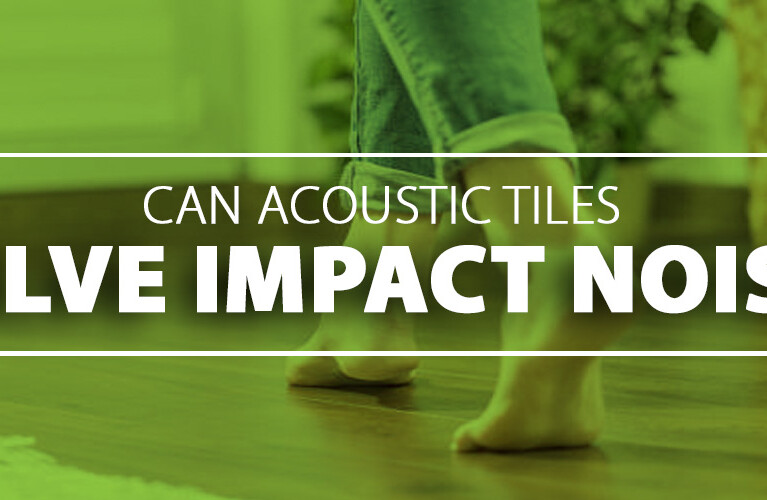The floor of a room can be a source of sound, and also aid in, the passage of noise into another room. We know that soundproofing a floor can be a tricky situation, as it’s often only considered after a floor is installed. Here are a few tips to take into consideration, before tackling your next soundproofing project.
First, identify the type of noise that needs to be treated. Floor soundproofing falls into two types of noise; impact noise and airborne noise.
Impact noise is the result of people walking on the floor or dropping items on the floor causing the vibrations to spread through the flooring, into the joists and then pass into the room below. These noises are then amplified into other rooms. Two tin cans on a string work on the same principle.
The solution:
An acoustical floor underlayment is one solution. The material will provide a resilient layer within the flooring assembly for reducing vibration noise. Different thicknesses are available that can be used depending on the expected noise but also the allowable thickness of the underlayment during construction. The flooring underlayment can be installed under virtually any type of flooring including wood, laminate, ceramic, vinyl plank and more. You can find solutions like this at your local Home Depot or just Google “Acoustical Floor Underlayment”.
Adding Green Glue Noiseproofing Compound in between sheets of plywood of the floor underlayment can be used to reduce the amount of sound transmission through walls or ceilings and reduce the amount of noise generated from impacts on floors.
What is airborne noise?
Airborne noise is sound that travels through the air. It can be people having a conversation, the radio playing or the television playing. Any noise in a room that is not be absorbed will impact the level of airborne noise being heard.
The solution:
This is a noise you want to block, much like adding layers to a wall to stop noise transmission, adding material to the floor can stop sound from passing through. Insulation should be added between the joists underneath the floor. Insulation will fill the space and dampen noise in cavernous joists. Plan on using an insulation known for acoustic absorption such as stone wool or mineral wool. This is an excellent insulation offering high R-value, along with sound blocking benefits.
What most individuals or homeowners do not realize is that floors can be soundproofed. Common floors that feature materials such as hardwood, laminate, ceramic or carpet are a few examples. However, depending on the type of floor you want to soundproof the installation complexity will vary.
The acoustics within a room and floor is not given much thought. It is always a great idea to add acoustically efficient materials to prevent sound from traveling from one room to another. If you are in need of additional advice about perfecting a soundproof floor, contact us today at [email protected], we are always happy to help.


